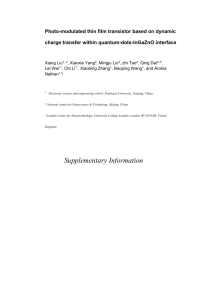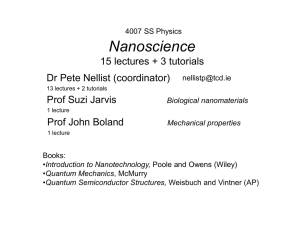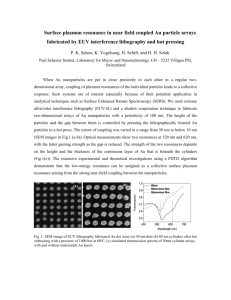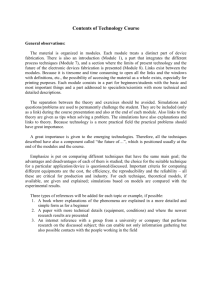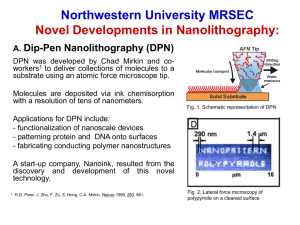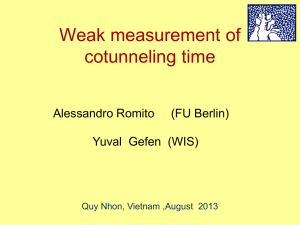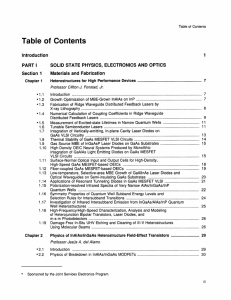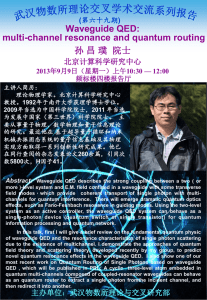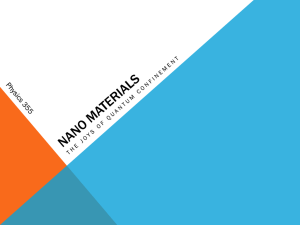TU/e 10 April 2015 Focus Session: Small-scale physics
advertisement
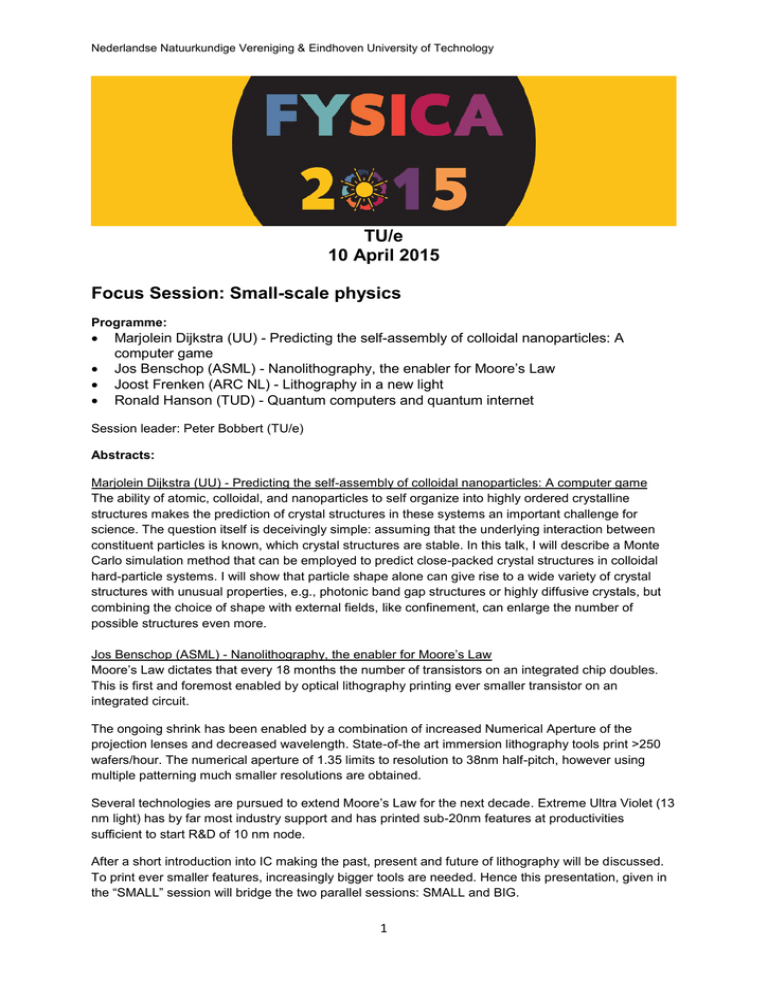
Nederlandse Natuurkundige Vereniging & Eindhoven University of Technology TU/e 10 April 2015 Focus Session: Small-scale physics Programme: Marjolein Dijkstra (UU) - Predicting the self-assembly of colloidal nanoparticles: A computer game Jos Benschop (ASML) - Nanolithography, the enabler for Moore’s Law Joost Frenken (ARC NL) - Lithography in a new light Ronald Hanson (TUD) - Quantum computers and quantum internet Session leader: Peter Bobbert (TU/e) Abstracts: Marjolein Dijkstra (UU) - Predicting the self-assembly of colloidal nanoparticles: A computer game The ability of atomic, colloidal, and nanoparticles to self organize into highly ordered crystalline structures makes the prediction of crystal structures in these systems an important challenge for science. The question itself is deceivingly simple: assuming that the underlying interaction between constituent particles is known, which crystal structures are stable. In this talk, I will describe a Monte Carlo simulation method that can be employed to predict close-packed crystal structures in colloidal hard-particle systems. I will show that particle shape alone can give rise to a wide variety of crystal structures with unusual properties, e.g., photonic band gap structures or highly diffusive crystals, but combining the choice of shape with external fields, like confinement, can enlarge the number of possible structures even more. Jos Benschop (ASML) - Nanolithography, the enabler for Moore’s Law Moore’s Law dictates that every 18 months the number of transistors on an integrated chip doubles. This is first and foremost enabled by optical lithography printing ever smaller transistor on an integrated circuit. The ongoing shrink has been enabled by a combination of increased Numerical Aperture of the projection lenses and decreased wavelength. State-of-the art immersion lithography tools print >250 wafers/hour. The numerical aperture of 1.35 limits to resolution to 38nm half-pitch, however using multiple patterning much smaller resolutions are obtained. Several technologies are pursued to extend Moore’s Law for the next decade. Extreme Ultra Violet (13 nm light) has by far most industry support and has printed sub-20nm features at productivities sufficient to start R&D of 10 nm node. After a short introduction into IC making the past, present and future of lithography will be discussed. To print ever smaller features, increasingly bigger tools are needed. Hence this presentation, given in the “SMALL” session will bridge the two parallel sessions: SMALL and BIG. 1 Nederlandse Natuurkundige Vereniging & Eindhoven University of Technology Joost Frenken (ARC NL) - Lithography in a new light With its recent step from light with wavelengths in the (deep) ultraviolet (UV, 193 nm) to the regime of the extreme ultraviolet (EUV, 13.5 nm and below), the field of advanced lithography for the semiconductor industry has been forced to develop radically novel technology. The working principle of the latest EUV lithography instrumentation is based on a spectacular, new combination of phenomena, involving such diverse subjects as laser physics, plasma physics, fluid dynamics, surface physics, and EUV optics. The point has been reached that significant progress in this new technology can no longer be maintained on the basis of further engineering. Instead, serious advances are required in fundamental knowledge in each of these areas of research. Generating precisely this basis of fundamental knowledge forms the key objective of the newly founded research center ARCNL. www.arcnl.nl Ronald Hanson (TUD) - Quantum computers and quantum internet A few months ago the Dutch government elected Quantum Technologies as one of 4 National Icon projects. In this talk I will present the basic concepts and the prospects for using the strange consequences of quantum theory for computing and communication. Whereas all current ICT is based on the fundamental “bit” that can have the value “0” or “1”, quantum theory allows bits to be in superposition states of “0” or “1”. Such quantum versions of bits are called qubits. In the past 20 years it has become clear that computing and communication devices based on qubits can greatly outperform all current ICT on specific tasks. I will briefly review some of these tasks, discuss the current status of devices and speculate how we may achieve this new “quantum revolution” within the newly established QuTech center (http://qutech.nl) in Delft. 2

